The following list highlights some of the best places to visiting in Iraq. So if you are in Iraq, I recommend visiting the following:
- Babylon, Hillah, Iraq
- Great Mosque of Samarra, Samarra, Iraq
- Lalish Temple, Al-Shikhan, Iraq
- Erbil Citadel, Erbil, Iraq
- Bahdinan Gate, Amedi, Iraq
- Qyzqapan Tomb, Dokan, Iraq
- Mudhif Houses, Al-Chibayish, Iraq
- Aqueduct of Jerwan, Al-Shikhan, Iraq
- Al-Shaheed Monument, Baghdad, Iraq
- Rabban Hormizd Monastery, Alqosh, Iraq
- Taq Kasra, Madain, Iraq
- Amna Suraka Prison, Sulaymaniyah, Iraq
- Pira Delal, Zakho, Iraq
- Mar Behnam Monastery, Khidr Ilyas, Iraq
- Dair Mar Elia, Mosul, Iraq
1. Babylon, Hillah
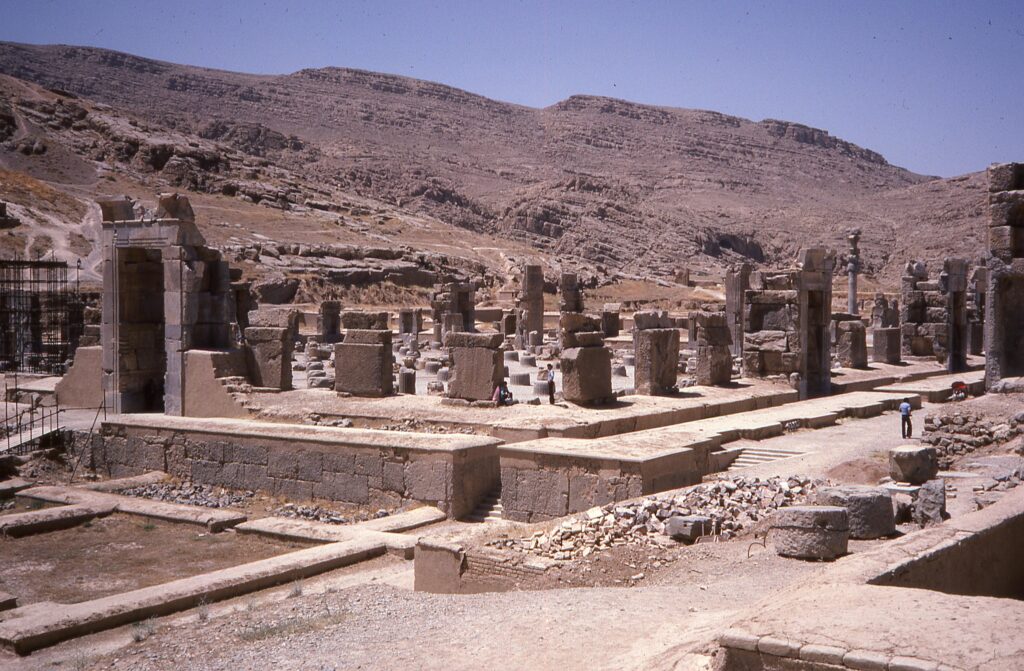
It groups together the archaeological remains of the city that was the capital of the ancient Neo-Babylonian Empire between 626 and 539 BC, as well as the surrounding villages and agricultural lands. Made up of the remains of temples, palaces and the towers and gates of the walled enclosures inside and outside the city, the remains of Babylon are a unique testimony to one of the most powerful empires of antiquity. The Hanging Gardens of Babylon’s walls, considered one of the Seven Wonders of the ancient world, have been a source of inspiration for artistic, popular and religious culture worldwide.
2. Great Mosque of Samarra, Samarra
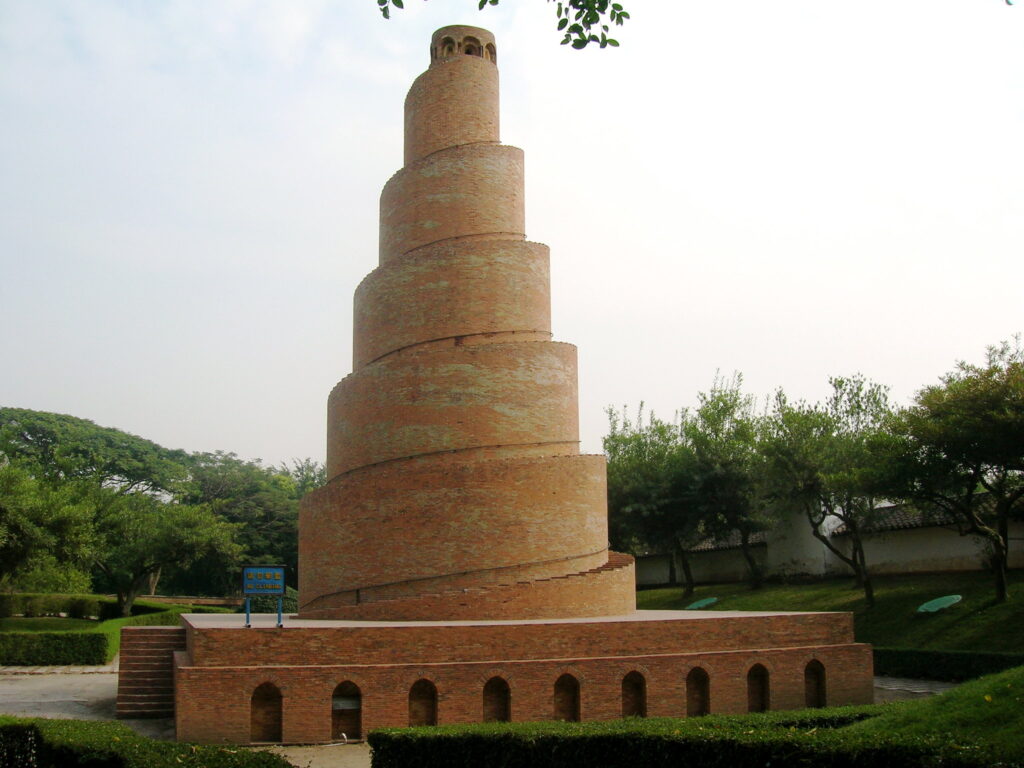
At the time of its construction, it was one of the largest in the world. A total of 80,000 Muslims could worship there at the same time. Today, only the tower and walls of the mosque remain. Once lined with marble mosaics and dark blue glass, they are now bare. Most of the decorative materials were taken elsewhere. The city of Samarra was once one of the largest cities in antiquity, yet now it is littered with crumbling brick walls and rammed earth. The area has become one of the largest archaeological sites in the world.
3. Lalish Temple, Al-Shikhan
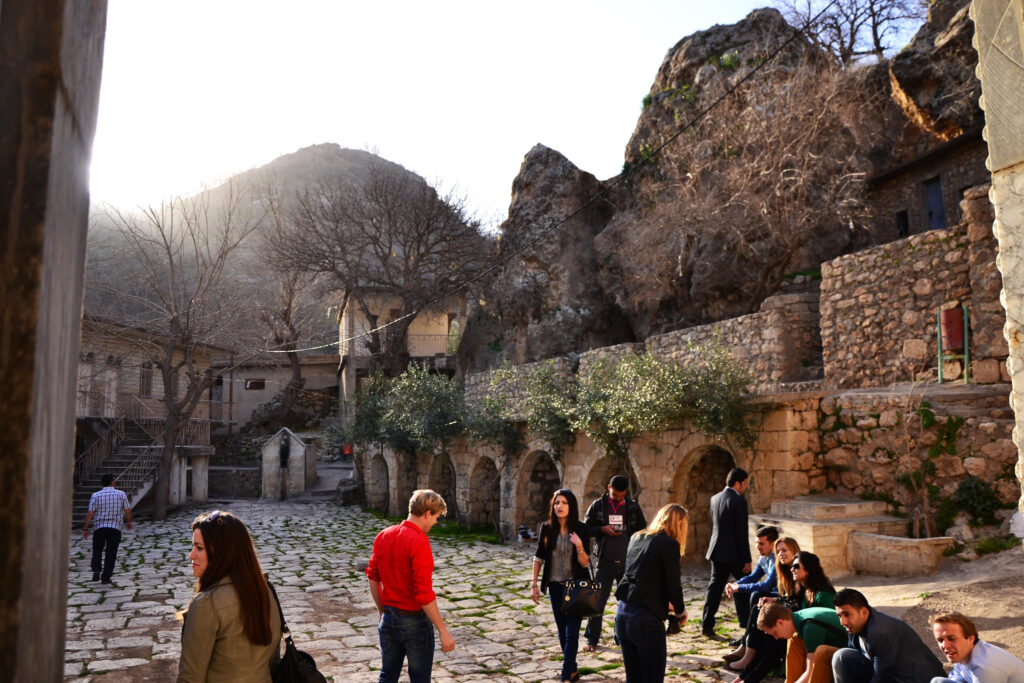
The three conical domes indicate the most sacred place for the Yazidis, a temple that guards the tomb of their prophet. Inside, there are several dimly lit rooms: on the one hand, there is a large hall with a large number of scarves that seem to hang from the columns and various artefacts. These handkerchiefs are used in various rituals, which can range from the reincarnation of the soul to the fulfilment of wishes. Moving on to the other room, we find a series of jars with oils inside, which are used in rituals such as marriage. Finally, doors lead to a lower area of the shrine, but this one is for Yazidis only.
4. Erbil Citadel, Erbil
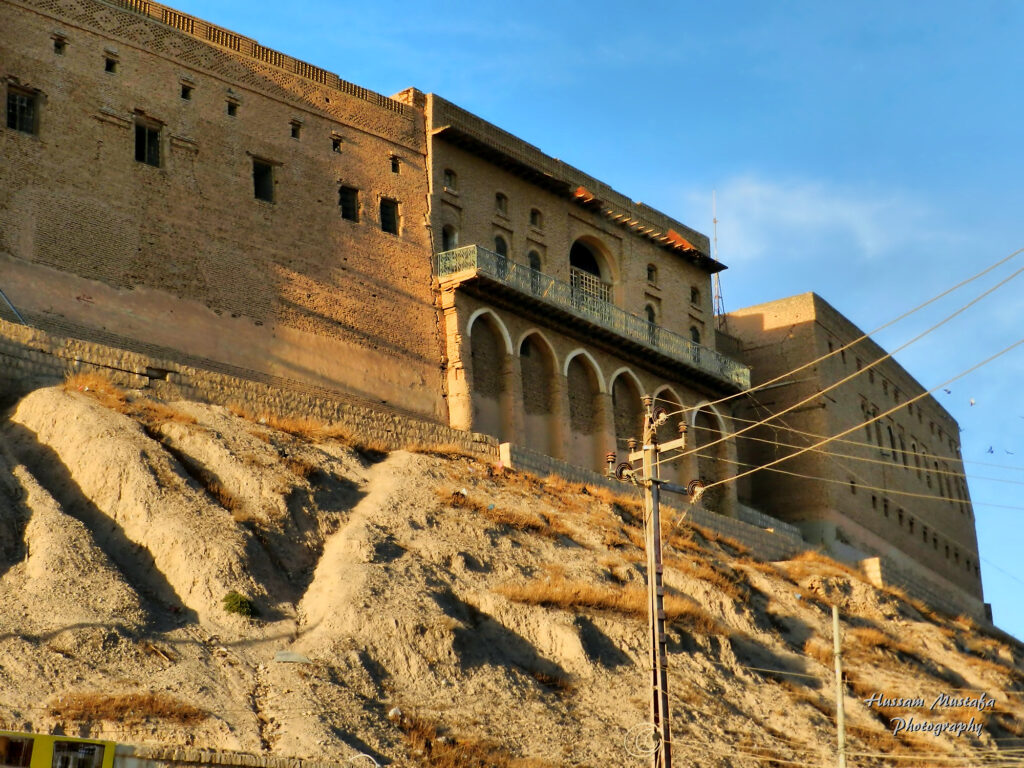
More than 7,000 years old, it is the centre of the capital of Iraqi Kurdistan. On an artificial mound rising 30 metres, the Citadel, which covers 10 hectares, has been inhabited by various civilisations. It houses 322 buildings, several palaces, four mosques, Turkish baths, a water reservoir, tombs and two walled entrances accessed by steep ramps. It contains the remains of Akkadians, Sumerians, Babylonians, Assyrians, Hittites, Medes, Persians, Greeks, Arabs, Mongols and Ottomans. Iraqi Kurds live there today.
5. Bahdinan Gate, Amedi
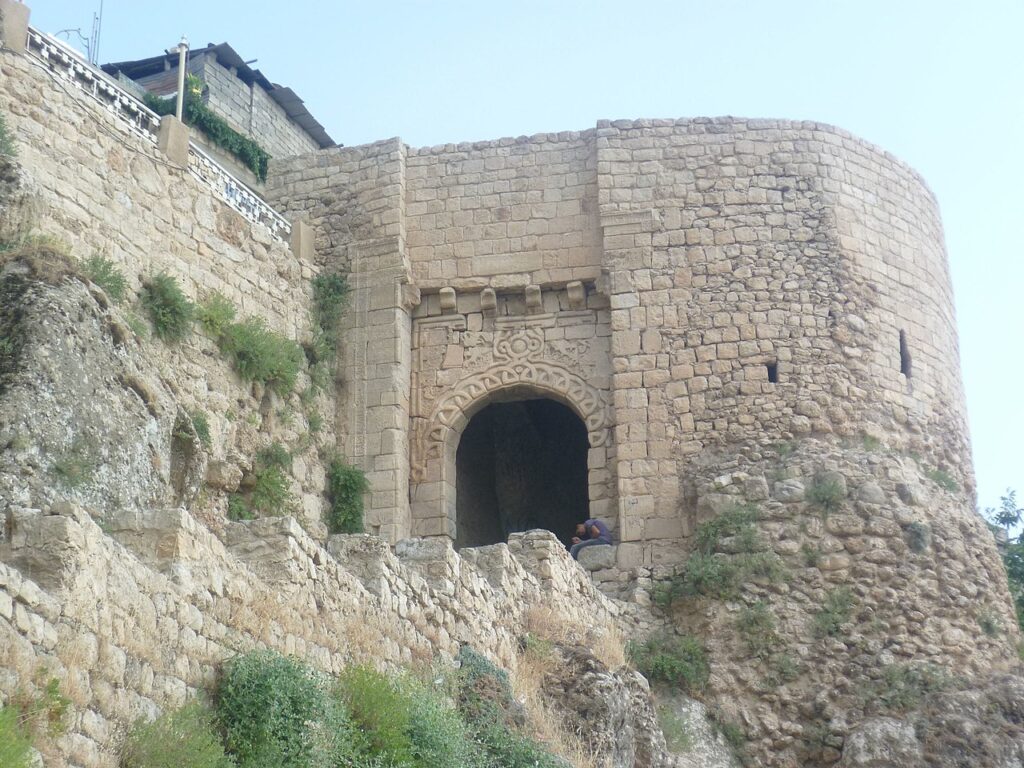
The arched stone gate on the western slope of Amadiya was once the only entrance to the walled city. A large spiral staircase leads through a 13-foot-wide entrance carved with four unidentified figures. Some historians believe they may have been the kings of Parthia in the 3rd century, suggesting that the gate was in use centuries before its construction. The arch is decorated with a statue of the sun, a recurring symbol of Kurdish architecture, surrounded by a rope with four knots, representing the geopolitical significance of the ancient city.
6. Qyzqapan Tomb, Dokan
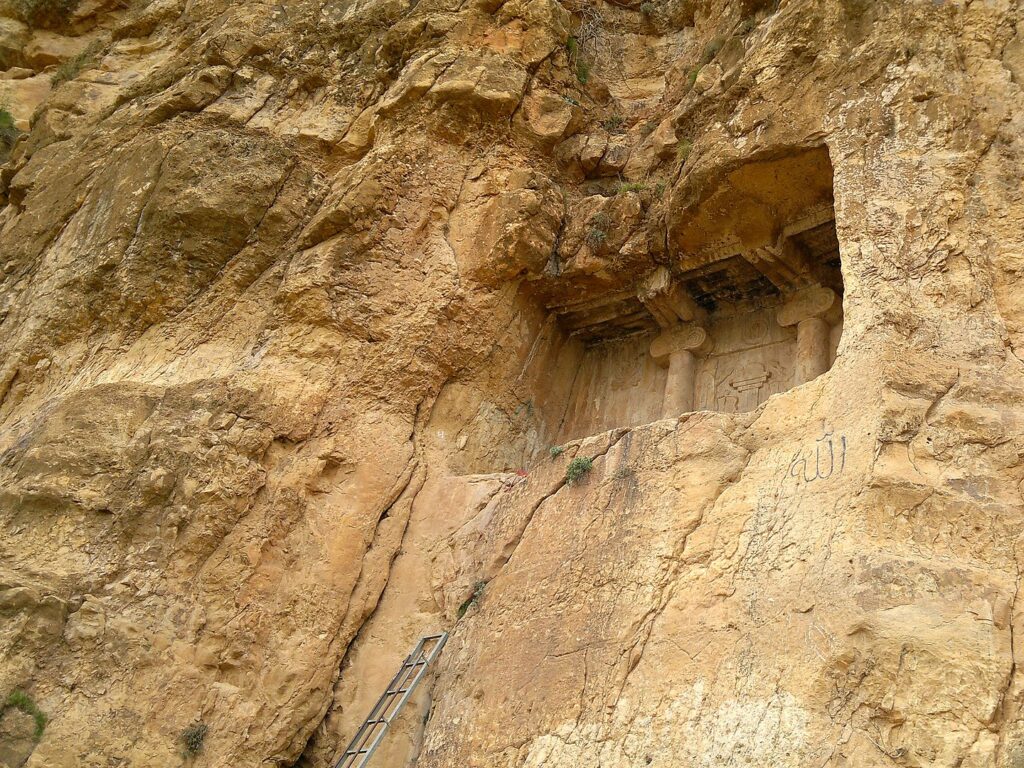
The archaeological site of Qyzqapan is said to be the tomb of Cyaxares, the great king of the Median Empire who saw the end of Assyrian hegemony, ushering in a Median era only to be supplanted by the Persians themselves. It may seem strange that this burial site in Iraqi Kurdistan is that of a Median king, and indeed it is unlikely. It was looted in antiquity and is now painted by the locals. No doubt it was indeed a monumental piece of architecture, not unlike the more luxurious examples of rock tombs around Persepolis in the east, or the simpler ones at the citadel of Urartu in Van to the north.
7. Mudhif Houses, Al-Chibayish
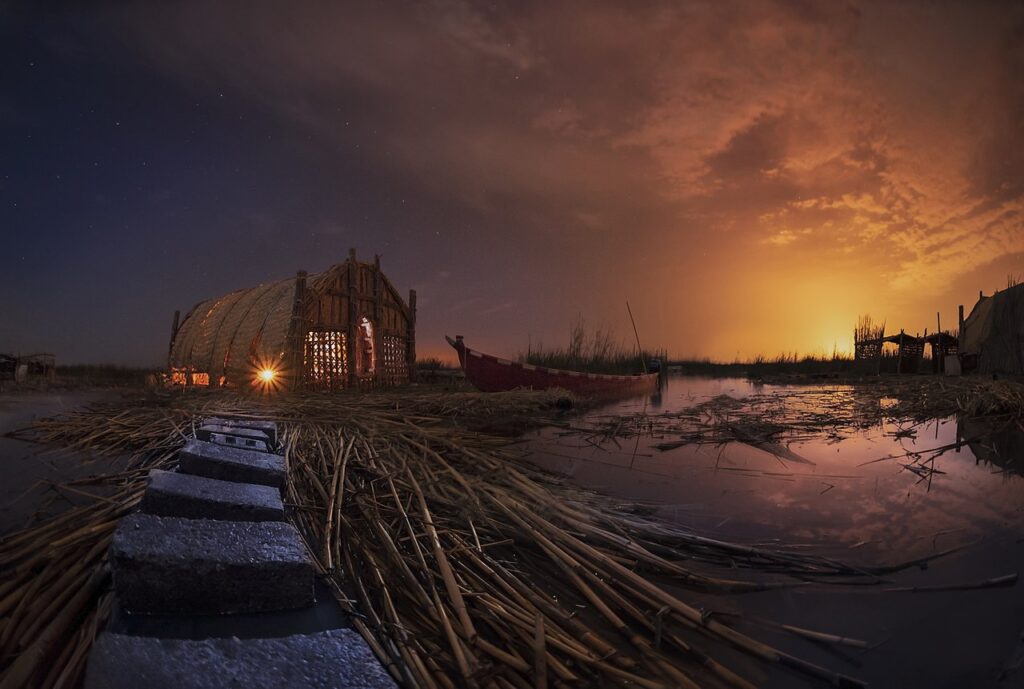
Mudhif dwellings are an Iraqi house typology made of straw, mud and bamboo branches, built without nails, wood or glass in less than three days. Even the islands on which they rest are made of compacted mud and reeds. This incredible ancient building method and technique has been used by the inhabitants of the plains for thousands of years, but in recent decades, it has almost completely disappeared.
8. Aqueduct of Jerwan, Al-Shikhan
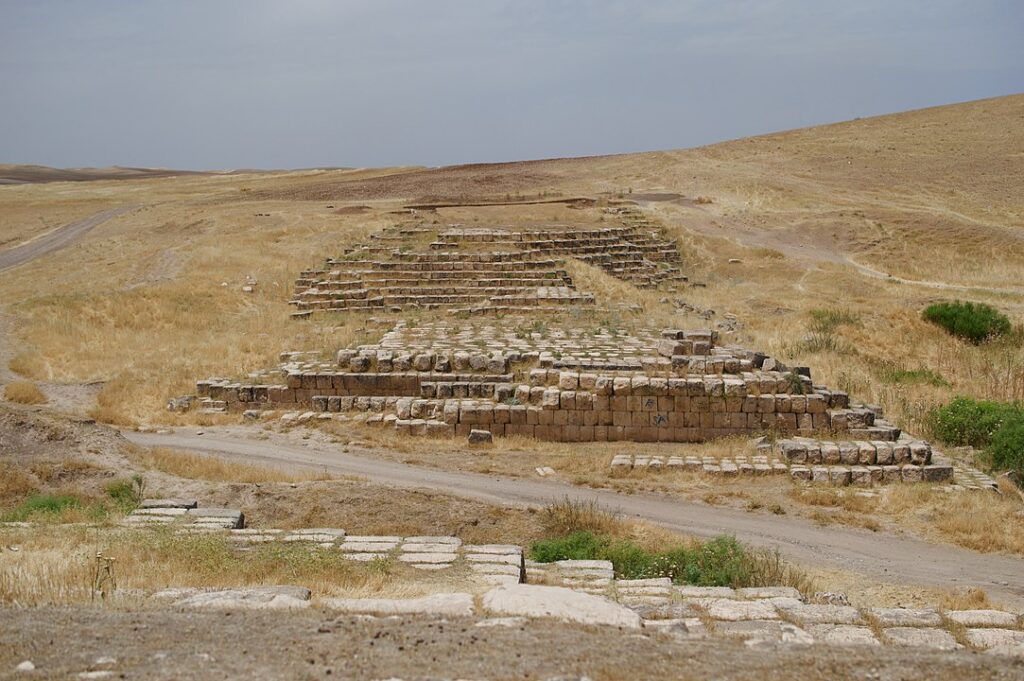
This massive aqueduct, which was built between 700 and 690 BC approximately 30 miles from the King’s Gardens, predates the Roman engineering marvels that still survive in Europe today and is said to be the oldest in the world. The hydraulic system is believed to have been fed from an early prototype of the Hanging Gardens of Babylon or perhaps from the legendary gardens themselves. The words of King Sennacherib still reach us today, more than 2000 years later, through inscriptions scrawled on the stones.
9. Al-Shaheed Monument, Baghdad
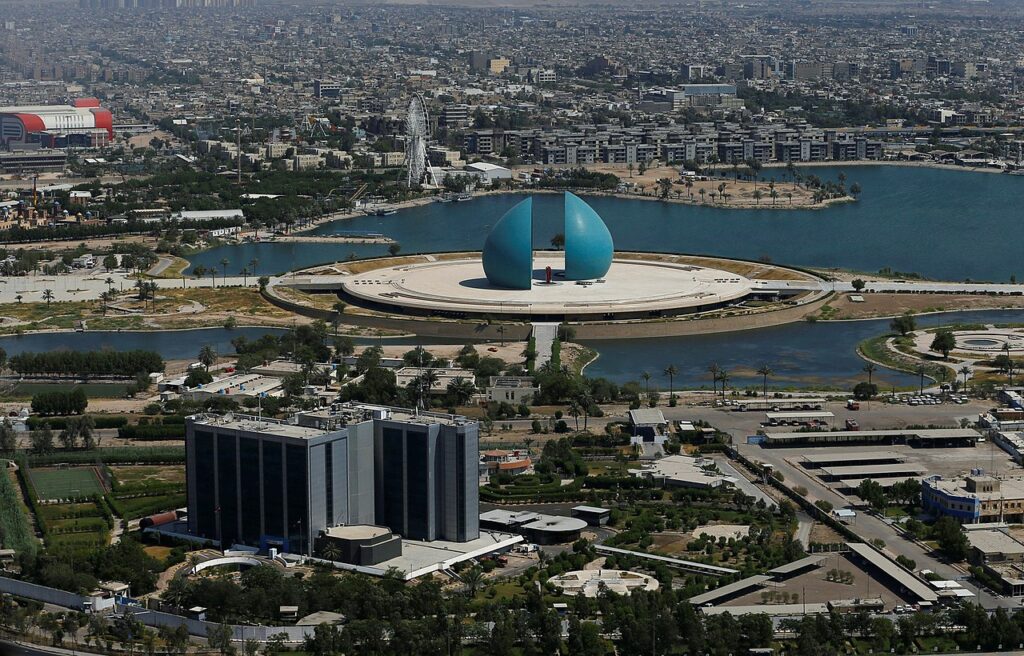
Designed by Iraqi architect Saman Kamal and Iraqi sculptor and artist Ismail Fatah Al Turk, the monument consists of a huge turquoise-tiled dome, 40 metres high. The dome is divided in half, housing an eternal flame in the middle. Inside one half of the dome is a circular pool of water that cascades into a courtyard below. Beneath the monument is a basement level that houses a museum, a library, a conference room and an exhibition hall, among other things. The monument is located in the middle of a lake on an artificial island.
10. Rabban Hormizd Monastery, Alqosh
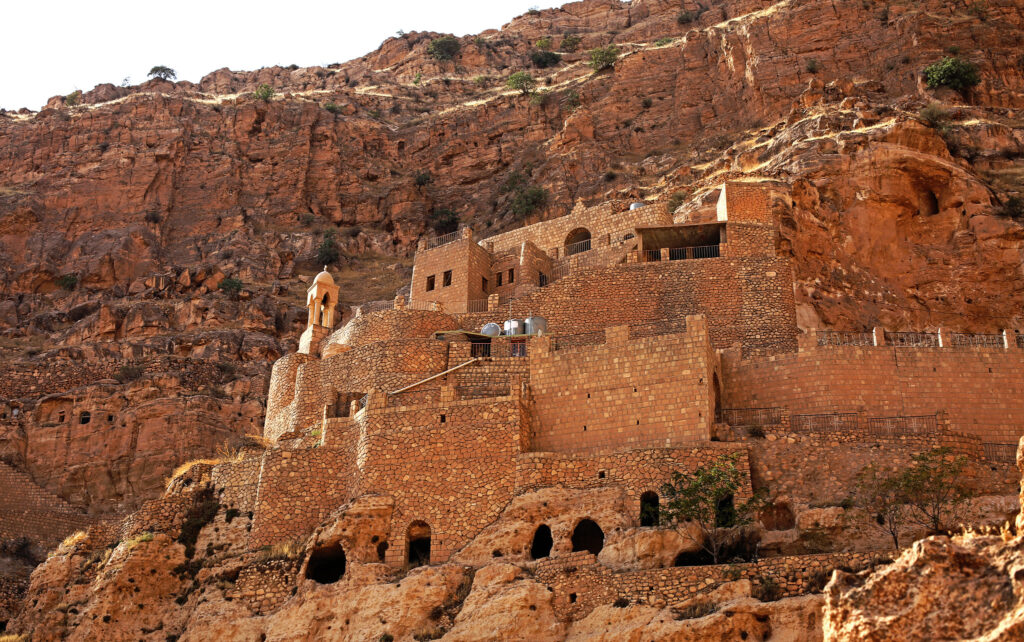
This monastery was founded in the 7th century by Rabban Hormizd. Between the 16th and 19th centuries Rabban Hormizd was the seat of the Patriarchs of this branch, until it disappeared and was replaced by the Chaldean Catholic Church. Over the years the monastery suffered numerous attacks, which destroyed its library and most of its works of art. After the last assault the monastery was abandoned, and in 1859 it was decided to build a new monastery on the outskirts of Alqosh, where the monks now reside. In addition, the area around the building is full of caves carved into the rock face where hermit monks lived in the past (some with reliefs, columns and inscriptions).
11. Taq Kasra, Madain
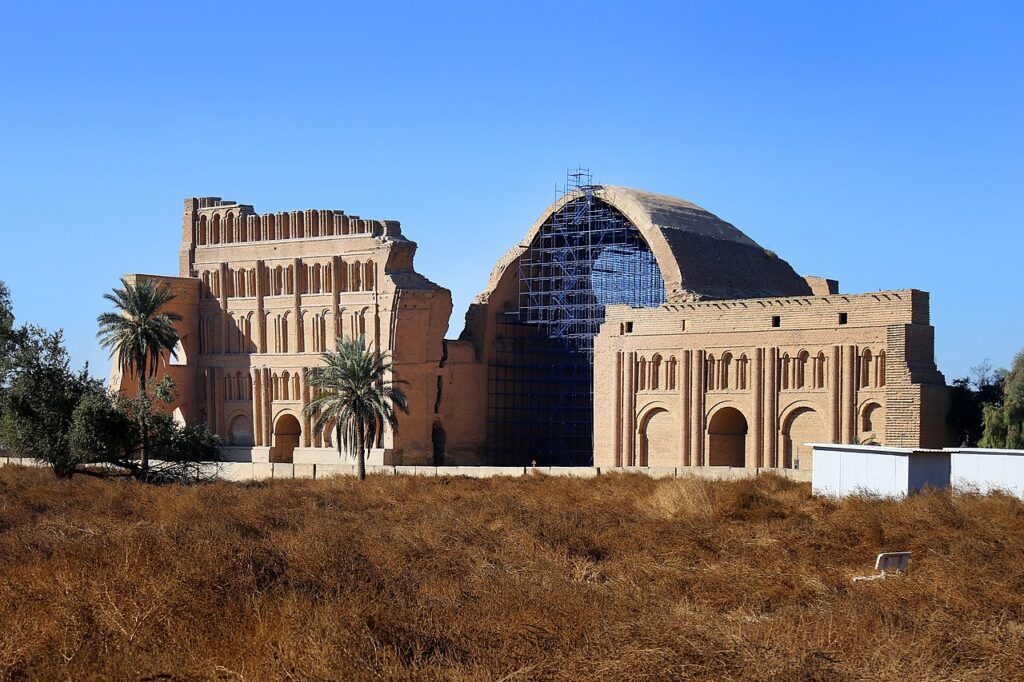
Taq Kasra, also called the Arch of Ctesiphon, is located about 35 km south of Baghdad. It is the only above-ground structure remaining from Ctesiphon, an ancient city that served as the royal capital of the Persian Empire. Although there is some debate as to the year of its construction, the arch is at least 1,400 years old. It rises to a height of 37 metres and stretches one metre thick at its apex and 7 metres thick at its supporting base, and is considered to be the largest single-span brick vaulted arch in the world.
12. Amna Suraka Prison, Sulaymaniyah
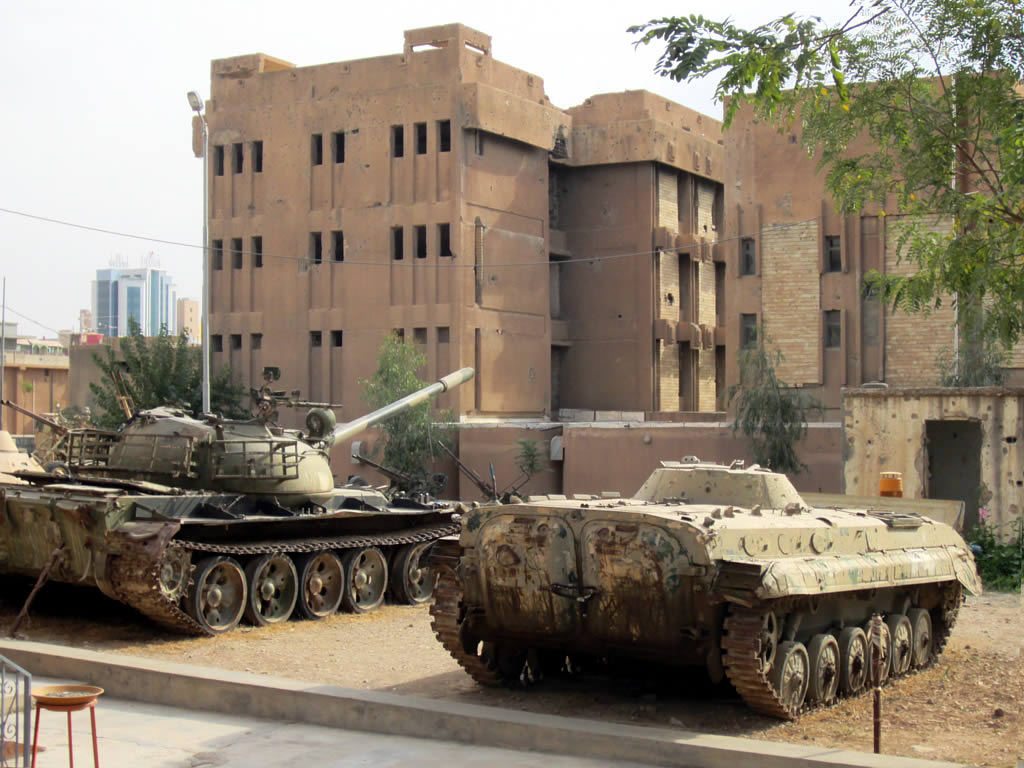
At first glance it looks like yet another abandoned military building from Saddam Hussein’s era, but within its walls lie the most sinister stories of systematic torture, massacres and all kinds of outrages committed by the Baathist regime against the Kurds. Old, dirty blankets and scribbles on the walls are the last living testimonies of what happened in those cells. The museum is not very crowded, apart from school buses, only a few visitors come to see the Red Prison.
13. Pira Delal, Zakho
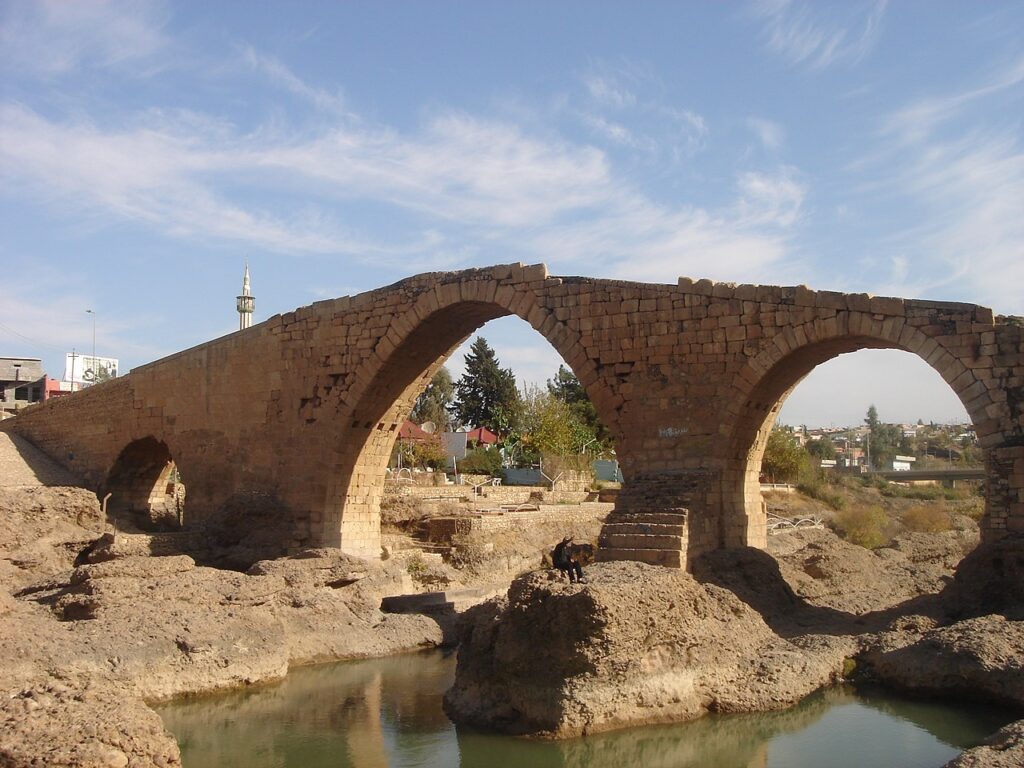
As with many ancient sites in northern Iraq, Pira Delal, has several names, including Delal Bridge, Zakho Bridge, Pira Delal, Pirdí Delal and Pira Berî. This is due in part to lexicographic changes over time, the coexistence of different language-speaking peoples, and formal versus informal registers. It is 377 feet 115 metres long and 53 feet 16 metres high at its apex. Today, despite newer and sturdier bridges crossing the Khabur River, this bridge still sees a lot of pedestrian, cyclist and motorcyclist traffic. It is also a hotspot for daredevils, who dive from its apex into the small pools that form seasonally at the foot of the bridge.
14. Mar Behnam Monastery, Khidr Ilyas
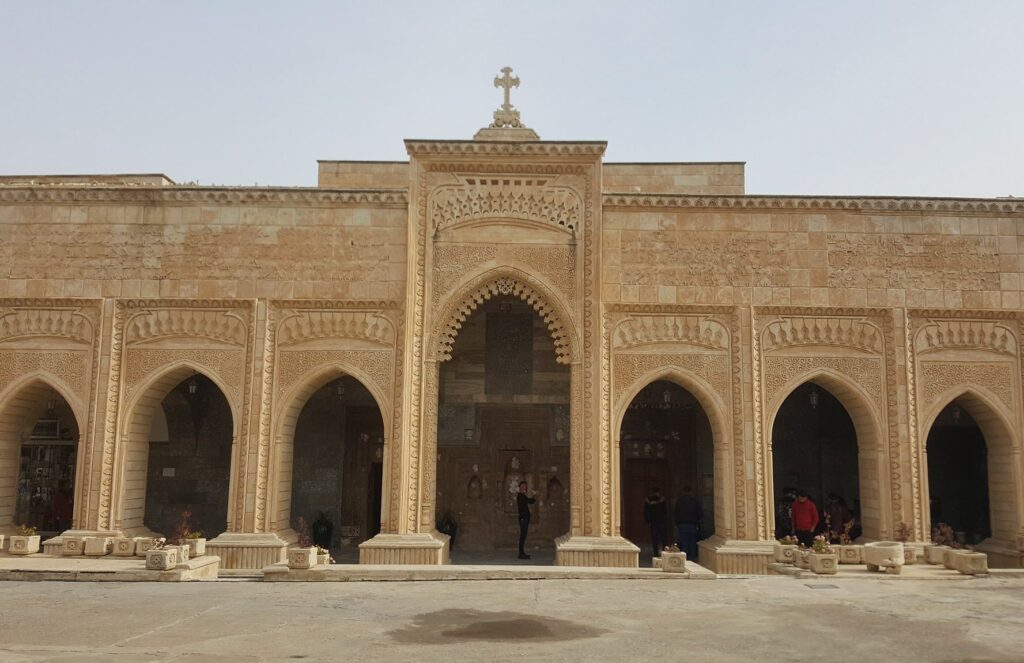
Martyr Benham and his Nuns Hall Monastery is a Syriac Catholic monastery near the city of Bahidida in northern Iraq. The monastery was built in the 4th century AD. The Assyrian king Simharib, who was working in a monastery, killed his son Benam and his daughter Sarah after their conversion to Christianity. After monophysitism was adopted in the region in the 5th century, the monastery was incorporated into the Syrian Orthodox Church.
15. Dair Mar Elia, Mosul
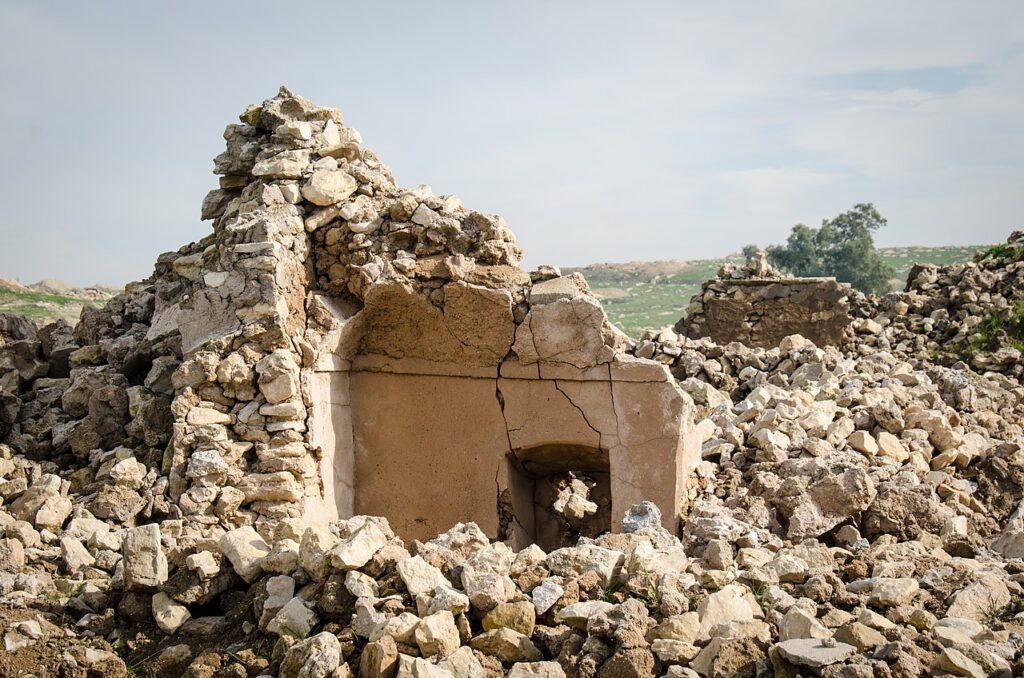
The oldest Christian monastery in Iraq until ISIS blew it up twice and then bulldozed over it. The monastery was located south of Mosul. Although it is in ruins, Christian pilgrims still visit the stone temple, which has a chapel and shrine, as well as a nearby reservoir and mineral springs.
If you loved this article or found it useful, don’t forget to visit and subscribe to my social media for more useful content. Follow us on Google My Business, YouTube, Instagram, Pinterest, Twitter, Facebook or Reddit and subscribe to our receive our free website content.

